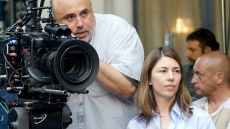ROSWELL, N.M. - Google executive Alan Eustace broke the sound barrier and set several skydiving records over the southern New Mexico desert early Friday after taking a big leap from the edge of space.
Eustace's supersonic jump was part of a project by Paragon Space Development Corp. and its Stratospheric Explorer team, which has been working secretly for years to develop a self-contained commercial spacesuit that would allow people to explore some 20 miles (32 kilometres) above the Earth's surface.
Friday's success marked a major step forward in that effort, company officials said.
"This has opened up endless possibilities for humans to explore previously seldom visited parts of our stratosphere," Grant Anderson, Paragon president and CEO, said in a statement.
The technology that has gone into developing the balloon, the spacesuit and the other systems that were used in Friday's launch will be used to advance commercial spaceflight, namely efforts by Arizona-based World View Enterprises to take paying tourists up in a high-altitude balloon and luxury capsule starting in late 2016.
As more people head into the stratosphere, the spacesuits could be adapted for emergency rescues or other scientific endeavours, officials said.
After nearly three years of intense planning, development and training, Eustace began his ascent via a high-altitude, helium-filled balloon just as the sun was rising. It took more than two hours to hit an altitude of 135,890 feet (41419 metres), from which he separated himself from the balloon and started plummeting back to Earth.
Wearing his specially designed spacesuit, Eustace hit a top velocity of 822 mph (1,322 kph) during a freefall that lasted 4 1/2 minutes.
Jim Hayhurst, director of competition at the United States Parachute Association, was the jump's official observer. He said Eustace deployed a drogue parachute that gave him incredible stability and control despite the massive Mach 1.23 speed reached during the freefall.
Eustace didn't feel it when he broke the sound barrier, but the ground crew certainly heard the resulting sonic boom, Hayhurst said.
"He just said it was a fabulous view. He was thrilled," Hayhurst said of his conversation with Eustace after he landed.
The supersonic skydive happened with little fanfare, out of the media spotlight, unlike the 2012 attempt by daredevil Felix Baumgartner and the Red Bull Stratos team. Baumgartner, who was taken aloft in a capsule with the help of millions of dollars in sponsorships, had set the previous altitude record by jumping from 128,100 feet (39,045 metres).
Watching Eustace and his team prepare was historic, said Hayhurst, likening the scene to what it must have been like to watch Ryan Airlines Corp. build the Spirit of St. Louis in the late 1920s.
"This was a bunch of quiet engineers doing the job," he said. "This is a scientific endeavour. This is a stepping stone to space."





